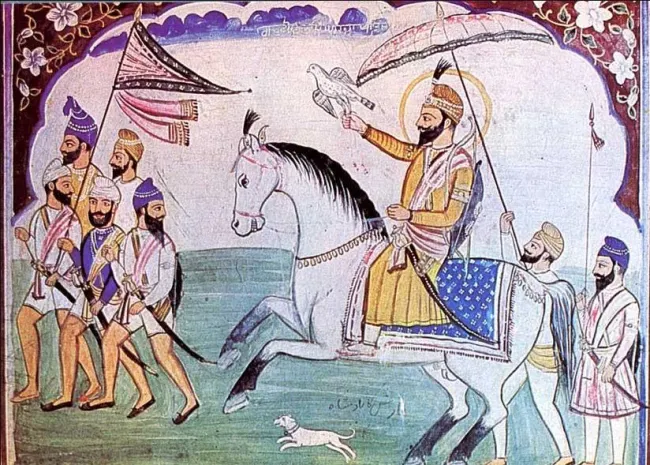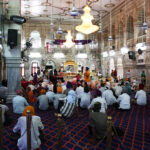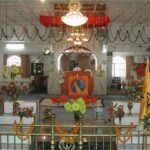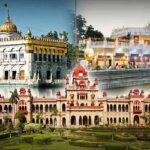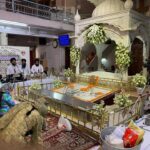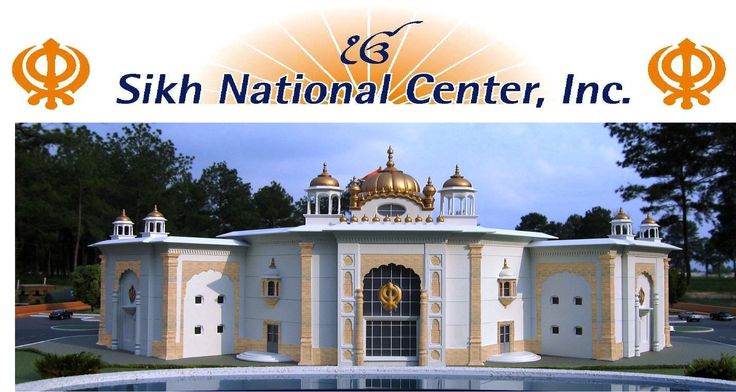Guru Nanak founded the Sikh faith in the Punjab region in the northern part of the Indian subcontinent, and present-day Pakistan, around the end of fifteenth century. Of the ten Sikh Gurus, he was the first. The tenth, Guru Gobind Singh, formalised its procedures on 13 April 1699. He baptised five Sikh people from diverse sections of India, with different socioeconomic origins, to form Khalsa fauj (ਖ਼ਾਲਸਾ ਫੌਜ). Those five Beloved Ones, the Pañj Piārē, then baptised him into the Khalsa fold.This gives the order of Khalsa a history of roughly 500 years. Historical theory and analysis says that Sikhism came into existence during the early Medieval period of the Bhakti movement and also after numerous invasions by Muslim monarchs upon the Hindu community during Mughal rule.
Modern Era (1469 CE –1708 CE)
Guru Nanak (1469 – 1539 CE) (1469 – 1539 CE)
The founder of Sikhism, Guru Nanak Dev (1469–1539), was born to Mehta Kalu and Mata Tripta in the village of Talwandi, now known as Nankana Sahib, close to Lahore.
His father, Mehta Kalu, worked for the government as a patwari, or land revenue accountant. Mata Tripta was Nanak’s mother, and Bibi Nanki was his only sibling.
Guru Nanak Dev Ji appeared to have developed an inquisitive and questioning mind at a young age. As a youngster, he refused to wear the ritualistic “holy” thread known as a Janeu and declared that he would wear the genuine name of God in his heart as protection, as the thread that could protect be destroyed, contaminated, burned, or lost could provide no security at all. From early childhood, Bibi Nanki sensed in her brother the Light of God but she did not share this secret to anyone. She is regarded as Guru Nanak’s original pupil.
Master Angad
In 1538, Guru Nanak picked Lehna, his pupil, as a successor to the Guruship rather than one of his sons.
Bhai Lehna was titled Guru Angad and became the successor of Guru Nanak. On March 31, 1504, in the Punjabi village of Harike in the Ferozepur district, Bhai Lehna was born. He was the son of Pheru, a modest shopkeeper. His mother’s name was Mata Ramo (also known as Mata Sabhirai, Mansa Devi, Daya Kaur) (also known as Mata Sabhirai, Mansa Devi, Daya Kaur). Baba Narayan Das Trehan was his grandpa, whose ancestral abode was at Matte-di-Sarai near Muktsar. Under the influence of his mother, Bhai Lehna began to adore Durga (A Hindu Goddess) (A Hindu Goddess). He used to lead a group of Hindu pilgrims to Jwalamukhi Temple every year. He wed Mata Khivi in January 1520, and they had two daughters and two boys (Dasu and Datu) (Amro and Anokhi). Due to the destruction of their ancestral hamlet by the Mughal and Baloch soldiers who had accompanied Emperor Babur, the entire Pheru family was forced to escape. After this, the family settled to the village of Khadur Sahib by the River Beas, near Tarn Taran Sahib, a tiny town about 25 kilometres from Amritsar city.
Guru Amar Das
At the age of 73, Guru Amar Das became the third Sikh guru in 1552. Goindwal became an important centre for Sikhism during the Guruship of Guru Amar Das. He continued to advocate for the equality of women, against Sati, and for the practise of Langar. In 1567, Emperor Akbar sat down for Langar with the common and underprivileged people of Punjab. Along with training 140 apostles, 52 of which were women, Guru Amar Das also named his son-in-law Jetha as the fourth Sikh Guru before passing away in 1574 at the age of 95.
Guru Ram Das
The fourth of the Ten Sikhism Gurus, Guru Ram Das (Punjabi: ) was born in Lahore, Punjab, Pakistan on September 24, 1534, and died in Amritsar, Punjab, India on September 1, 1581. He succeeded Guru Amar Das as Guru on August 30, 1574. He was born in Lahore to a Sodhi family of the Khatri tribe. His father was Hari Das and his mother Anup Devi, and his name was Jetha, meaning ‘first born’. The third guru of the Sikhs, Guru Amar Das, had a younger daughter named Bibi Bhani who was his wife. Prithi Chand, Mahan Dev, and Arjan Dev were their three sons.
Guru Arjan Dev
In 1581, Guru Arjan – the youngest son of the fourth guru — became the Fifth Guru of the Sikhs. In addition to being responsible for building the Golden Temple, he prepared the Sikh Holy text and his personal addition of over 2,000 plus songs in the Gurū Granth Sāhib. He compiled and composed the most hymns. Many more verses from Bhagats, Bhatts, and Gursikhs, including Sheik Farid, Sant Kabir, Bhagat Namdev, and Bhai Mardana, were added by him. In 1604 he placed the Ādi Granth for the first time as the Holy Book of the Sikhs. He is known as Shaheedan-De-Saraaj or Crown of Martyrs because he provided Jehangir’s son langer and made him hear Kirtan, his son, Khusrau, was rising against Jehangir.
